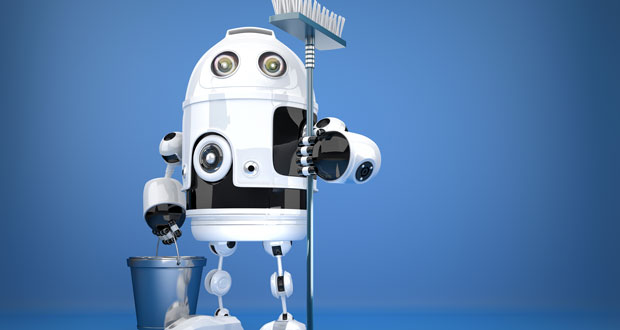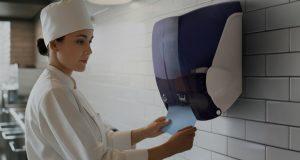Ryan Smith, a Product Design Engineer at Victor Floorcare, delves into the impact of robotics on floorcare maintenance, discussing the advantages, obstacles, and how human-robot collaboration could enhance efficiency.
Automation is gaining traction; while initial technological limitations hindered its adoption, there is now excitement about combining robotic precision with human innovation. As a concept, cobotics capitalises on the strengths of both robots and people to create a harmonious, more productive workflow.
The popularity of cobotics has grown as the cleaning sector faces staff shortages and burnout. Recent studies reveal that low wages, irregular hours and physically demanding work have led to a high turnover rate, forcing the industry to adopt robotics to combat these challenges.
This isn’t solely within the cleaning sector. In fact, operational robots reached a new record of about 3.9 million units used across manufacturing, logistics and warehousing, healthcare and retail industries to help workforces become more efficient.
Robotic cleaners are now being utilised in environments such as hospitals and shopping centres to support maintenance teams, especially in areas with high foot traffic and heavy cleaning demands. These robots, equipped with advanced sensors, navigate around obstacles and clean efficiently without disturbing human activities. They can also be scheduled to clean after hours, eliminating the need for staff to work night shifts.
How will this innovation contribute to the cleaning industry?
The evolution of robotics
Cobotics, or ‘collaborative robots,’ are designed to work alongside human cleaners, handling routine maintenance tasks. Unlike fully autonomous robots, cobots can take on repetitive duties like vacuuming, mopping, and wiping surfaces, allowing human cleaners to focus on more complex tasks.
Enhancing efficiency
When working with traditional robots, operators typically spend a lot of time setting up part of the tasks for robots to complete. However, with collaborative robots, human cleaners’ time is freed up as the cobots can optimise resources – saving time, costs, and floor space.
In a study conducted by MIT researchers at a BMW factory, teams comprising people and cobots were shown to be more productive than teams made up of either humans or robots alone. In fact, human idle time was reduced by 85 per cent when collaborating with a cobot.
Decrease costs
Despite their potential, cobots face significant challenges in widespread adoption, including concerns about quality, technological sophistication, and cost. With today’s collaborative technology, more firms are gaining increased productivity as these robotics can work directly next to their human counterpart, and there are fewer barriers to work around. This helps to increase business opportunities due to efficient working but also increases ROIs.
Low-maintenance solution
One of the most positive benefits of cobotics is their nearly maintenance-free operation and long-term reliability. With the high demand across the cleaning industry implementing these robotics alongside humans can support the impact of employee shortages or sick days as tasks can still be performed regardless of current circumstances.
Many of these machines can be programmed to run automatic systems checks and can accurately diagnose potential issues. To ensure cleaning rotations can stay efficient by receiving alerts to resolve issues before they cause operational downtime, allowing the business to stay one step ahead.
Future concerns
Facility managers have several concerns regarding the implementation of robotics in cleaning operations. Issues include the need for staff training, high upfront and repair costs, and the continued necessity for human cleaners to address areas like stairs, shelves, and crevices.
As cobotic technology progresses, human cleaners are unlikely to be completely replaced. Humans possess qualities that machines cannot such as judgement, adaptability, and problem solving skills which are integral to a successful business. Employees excel in navigating complex situations and responding to unexpected challenges, providing a level of service beyond the reach of robots.
The future of cleaning is not about replacing humans with robots but fostering collaboration. Cobots can handle routine tasks, enhancing efficiency and freeing human cleaners to focus on quality and detail. The cleaning industry will benefit from a synergy between human expertise and technological innovation, ensuring cleaner and healthier environments for everyone.





